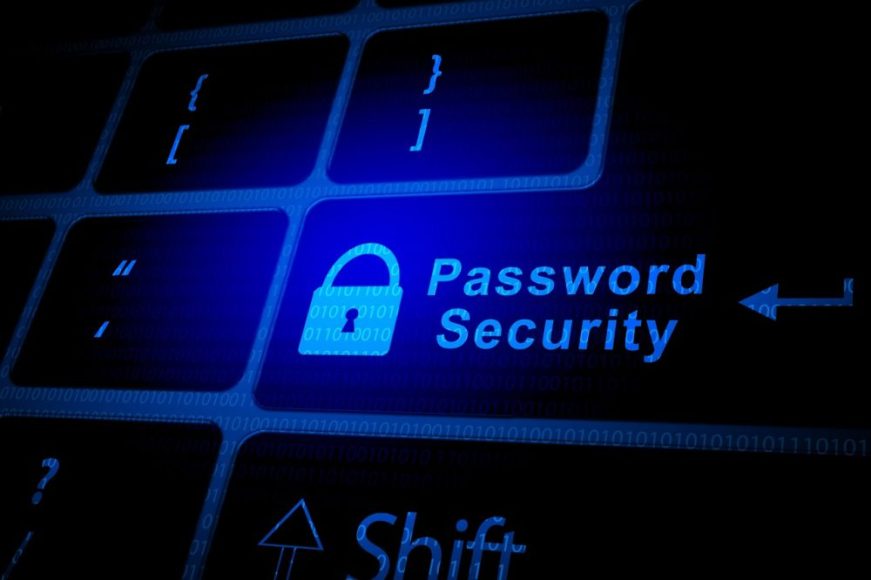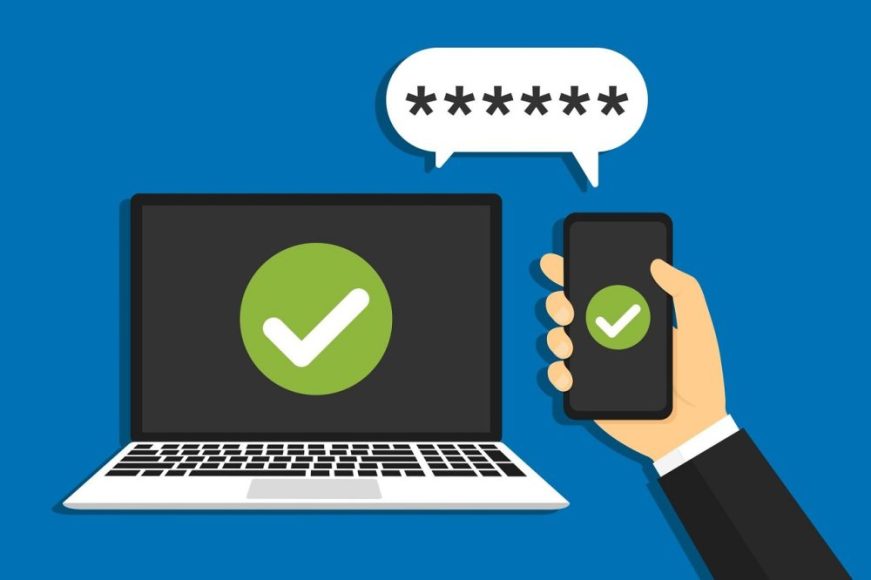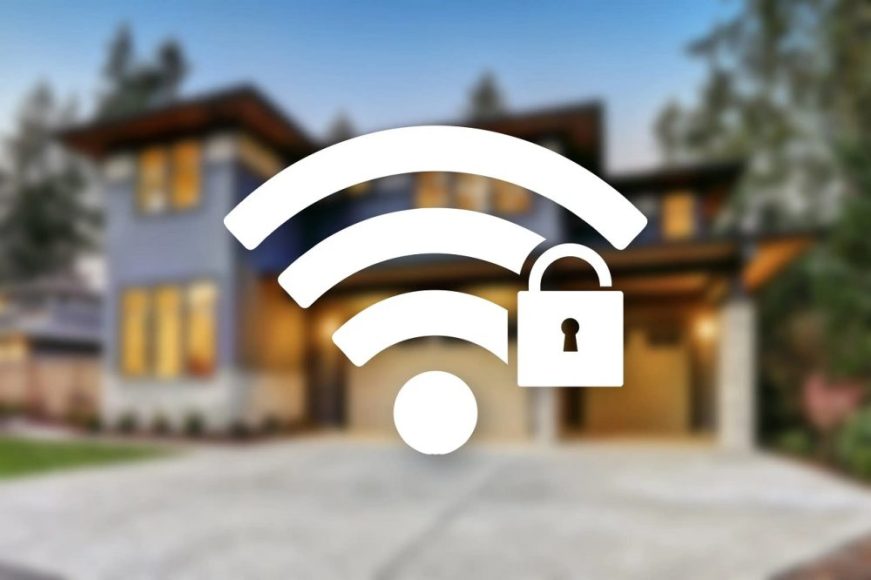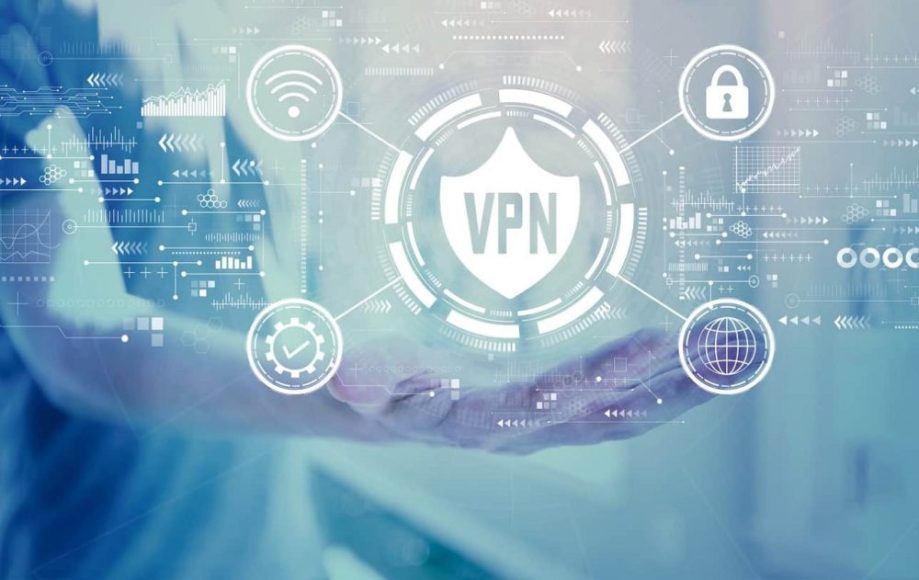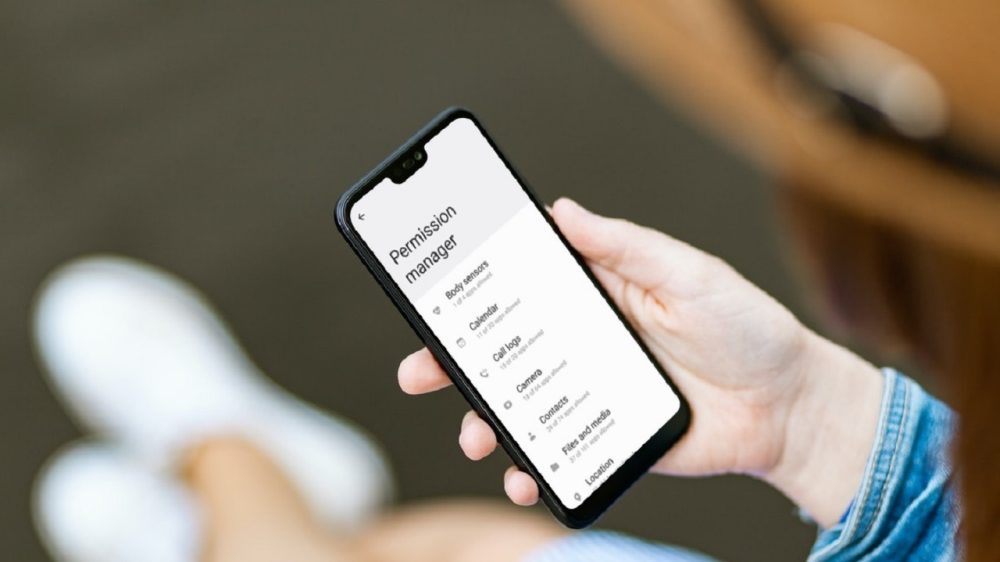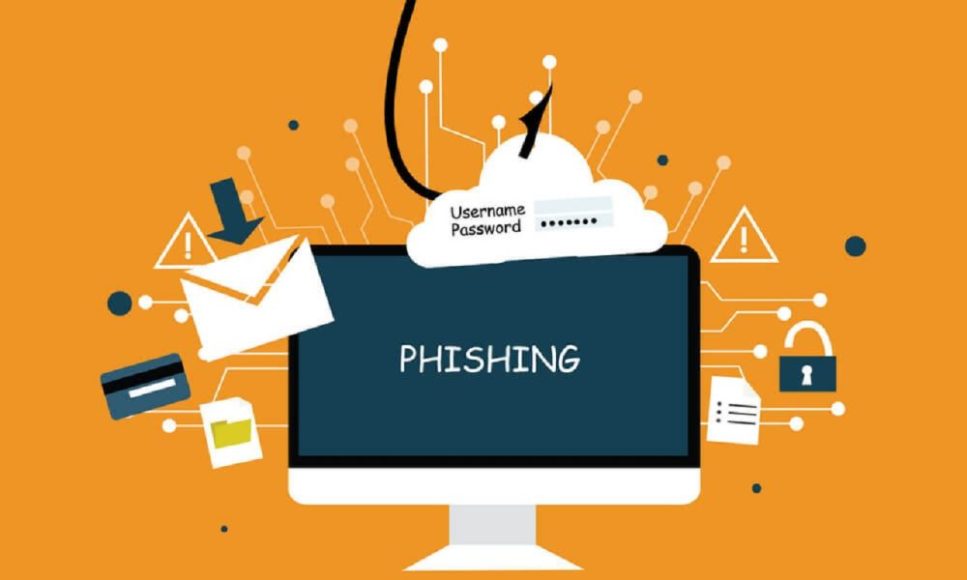In the fast-paced realm of digital technology, protecting our digital fortresses, comprising apps and software, is paramount. Security breaches and data vulnerabilities loom as constant threats, making it imperative to fortify our digital fortress to safeguard our valuable information.
In this article, we will delve into 17 must-know tips for enhancing the security of your digital fortress, encompassing apps and software. By implementing these proactive measures, you can bolster the security of your digital realm, ensuring a safe and resilient environment for your digital endeavors.
So, let’s explore the essential tips to fortify your digital fortress and protect your valuable data from potential security risks.
1- Keep Your Software Updated
Keeping your software updated is an essential practice in fortifying your digital fortress and ensuring the security of your apps and software. By regularly updating your software, you can protect your digital ecosystem from potential security risks and vulnerabilities.
Firstly, software updates provide crucial security patches. Developers constantly monitor their software for any discovered vulnerabilities and release patches to address them.
These vulnerabilities can be exploited by hackers to gain unauthorized access to your digital fortress, compromising the security of your apps and software. By installing updates promptly, you effectively close these security loopholes and mitigate potential risks.
Additionally, software updates often introduce new security features and protocols. As cyber threats evolve, developers work diligently to enhance the security of their software. Through updates, you can take advantage of these new security measures, strengthening the protective barriers around your digital fortress and ensuring a safer environment for your apps and software.
Furthermore, Neglecting software updates can leave your digital fortress susceptible to cyber attacks. Outdated software may contain known vulnerabilities that hackers can exploit to gain unauthorized access, compromising sensitive data or causing other detrimental consequences. Therefore, it is crucial to stay ahead of potential threats by regularly updating your software.
Moreover, to simplify the update process, enable automatic updates whenever possible. Most operating systems and software applications offer this feature, ensuring that you receive the latest updates without manual intervention. By automating the process, you reduce the risk of overlooking critical updates that are vital for the security of your digital fortress.
2- Use Strong and Unique Passwords:
Using strong and unique passwords is a critical aspect of fortifying your digital fortress and ensuring the security of your apps and software. By implementing this best practice, you significantly reduce the risk of unauthorized access and protect your valuable digital assets.
First and foremost, strong passwords act as a robust barrier against potential security breaches. When creating a password, ensure it is complex and difficult to guess. Incorporate a combination of uppercase and lowercase letters, numbers, and special characters.
Avoid using easily guessable information such as birthdays or common phrases. By crafting a strong password, you create an additional layer of security, making it harder for hackers to crack and gain unauthorized access to your digital fortress.
Additionally, Equally important is the practice of using unique passwords for each of your apps and software. Reusing passwords across multiple accounts increases the vulnerability of your digital fortress. If one account gets compromised, it puts all other accounts using the same password at risk.
By using unique passwords for each app and software, you limit the potential damage of a security breach and maintain a higher level of security across your digital ecosystem.
Moreover, to effectively manage and remember your passwords, consider using a reliable password manager. Password managers securely store your passwords and generate strong, unique passwords for you. They also offer the convenience of auto-filling passwords, saving you the trouble of remembering them.
By utilizing a password manager, you ensure the security of your passwords while streamlining the process of accessing your apps and software.
3- Enable Two-Factor Authentication:
Enabling two-factor authentication (2FA) is a powerful method to fortify your digital fortress, enhance the security of your apps and software, and safeguard your valuable digital assets. With 2FA, you add an extra layer of protection to your accounts by requiring a second form of authentication in addition to your password.
Firstly, By implementing 2FA, you significantly reduce the risk of unauthorized access. Even if someone manages to obtain your password, they would still need the second factor, typically a unique code generated on your smartphone or sent via SMS, to gain entry to your accounts. This additional step adds a crucial barrier against potential security breaches.
Furthermore, most apps and software platforms nowadays offer built-in 2FA options, making it easy to enable this extra security measure. You can typically find the option to enable 2FA in your account settings.
It is advisable to opt for an authentication app rather than relying solely on SMS codes, as authentication apps provide a more secure and reliable method of generating the second factor.
Moreover, Enabling 2FA is a simple yet powerful step towards enhancing the security of your digital fortress. It adds a layer of protection that significantly reduces the risk of unauthorized access.
By taking advantage of this security feature, you can safeguard your valuable digital assets and enjoy peace of mind knowing that your apps and software are better protected against potential security breaches.
4- Be Cautious with App Permissions:
Being cautious with app permissions is crucial for fortifying your digital fortress, ensuring the security of your apps and software, and protecting your valuable digital assets. When installing or using apps, it is essential to carefully review and consider the permissions requested by each app.
Firstly, Apps often request permission to access various features or data on your device. While some permissions may be necessary for the app’s functionality, granting excessive or unnecessary permissions can potentially compromise your digital security. Therefore, it is essential to be vigilant and evaluate the permissions requested by each app.
Additionally, before granting permissions, consider the following factors. Firstly, review the app’s purpose and functionality to determine if the requested permissions align with its intended use. If an app requests access to sensitive data or features unrelated to its function, it may be a red flag.
Furthermore, take note of the app developer’s reputation and credibility. Well-established and reputable developers are more likely to prioritize user privacy and security. Consider researching the developer and reading user reviews before granting permission to their apps.
Moreover, Regularly review and manage app permissions on your device. Remove unnecessary permissions for apps that no longer require them. This practice reduces the potential attack surface and minimizes the risk of unauthorized data access.
Thus, exercising caution with app permissions is vital for the security of your digital fortress. By carefully evaluating the permissions requested by each app, you can mitigate the risk of unauthorized data access and protect your valuable digital assets.
Prioritize app & software developers with a reputable track record, regularly review and manage app permissions, and ensure that the permissions granted align with the app’s intended functionality. By implementing these practices, you can maintain a more secure digital environment and safeguard your sensitive information.
5- Use Reputable Antivirus and Security Software:
Using reputable antivirus and security software is a vital step in fortifying your digital fortress, ensuring the security of your apps and software, and safeguarding your valuable digital assets. With the constant threat of malware, viruses, and cyber attacks, having reliable protection is essential.
Firstly, Reputable antivirus software offers comprehensive protection against a wide range of threats. It scans your apps and software, detects and removes malicious programs, and prevents unauthorized access to your digital ecosystem.
Additionally, when choosing antivirus and security software, opt for trusted brands with a proven track record. Well-established companies that specialize in digital security are more likely to provide robust and up-to-date protection against the latest threats.
Furthermore, regularly update your antivirus software to ensure that you have the latest virus definitions and security patches. This practice helps maintain the effectiveness of your security software in detecting and mitigating emerging threats.
In conjunction with antivirus software, consider using additional security solutions such as firewalls, anti-malware, and anti-spyware tools. These provide additional layers of protection and help strengthen your digital fortress against various forms of cyber threats.
In addition, Remember to keep your antivirus software and security solutions up to date, run regular scans, and enable real-time protection. These proactive measures will help ensure the ongoing security of your digital ecosystem.
Moreover, using reputable antivirus and security software is essential for protecting your digital fortress, apps, and software.
By choosing trusted brands, updating your software regularly, and employing additional security solutions, you can defend against malware, viruses, and cyber attacks. Stay proactive in maintaining the security of your digital ecosystem to safeguard your valuable data and preserve the integrity of your digital fortress.
6- Secure Your Wi-Fi Network:
Securing your Wi-Fi network is a crucial step in fortifying your digital fortress, ensuring the security of your apps and software, and safeguarding your valuable digital assets. With the increasing reliance on wireless connectivity, it is vital to implement robust security measures to protect your network from unauthorized access and potential threats.
Firstly, change the default administrator username and password of your Wi-Fi router. Default credentials are often widely known and easily exploitable, making your network vulnerable to unauthorized access. Choose a strong and unique password to prevent unauthorized individuals from gaining control of your network.
Additionally, Enable network encryption using the latest Wi-Fi security protocols such as WPA2 or WPA3. Encryption ensures that data transmitted over your network is secure and cannot be intercepted by malicious actors. Avoid using outdated or insecure encryption methods.
Moreover, Change your Wi-Fi network’s SSID (Service Set Identifier) to a unique name that doesn’t reveal personal information or the type of router you are using. This step adds an extra layer of privacy and makes it more difficult for potential attackers to target your network.
In addition to that, Consider implementing MAC address filtering on your Wi-Fi router. By adding the MAC addresses of your authorized devices to the router’s whitelist, you can restrict network access to only those devices, preventing unauthorized devices from connecting to your network.
Moreover, Regularly update your Wi-Fi router’s firmware to ensure you have the latest security patches and bug fixes. Manufacturers release firmware updates to address vulnerabilities and enhance the security of their devices. Check the manufacturer’s website for firmware updates or enable automatic updates if available.
7- Back Up Your Data:
Backing up your data is a crucial step in fortifying your digital fortress, ensuring the security of your apps and software, and protecting your valuable digital assets. By creating regular backups, you can mitigate the risks of data loss, hardware failure, or security breaches.
Firstly, identify the critical data that you want to back up. This may include important documents, photos, videos, and other files stored on your devices. Evaluate the data’s importance and prioritize accordingly.
Choose a reliable backup solution that suits your needs. This can include cloud-based backup services, external hard drives, or network-attached storage (NAS) devices. Ensure that the chosen solution offers robust security measures to protect your data during storage and transfer.
Create a regular backup schedule to ensure your data is consistently protected. Automate the backup process whenever possible to minimize the risk of human error or forgetfulness. Set reminders or utilize backup software to facilitate this process.
Verify the integrity of your backups by periodically testing the restoration process. This ensures that your backups are functioning correctly and can be relied upon when needed. Regular testing provides peace of mind and confidence in your backup strategy.
Store your backups in secure locations, keeping them separate from your primary devices. This protects your data from physical damage, theft, or other unforeseen events. Consider using encrypted storage options for an added layer of security.
8- Be Cautious with Email attachments and Downloads:
Being cautious with email attachments and downloads is crucial for fortifying your digital fortress, ensuring the security of your apps and software, and protecting your valuable digital assets. With the prevalence of phishing attacks and malware-laden attachments, it is essential to exercise vigilance when handling email-based content.
Exercise caution when opening email attachments, especially if they come from unfamiliar or suspicious senders. Malicious attachments can contain malware that can compromise the security of your devices and data.
Scan email attachments with reputable antivirus software before opening them. Antivirus scans help detect and eliminate any potential threats, providing an extra layer of protection for your digital ecosystem.
Beware of email phishing attempts that trick you into downloading malicious software or disclosing sensitive information. Pay attention to suspicious email addresses, misspellings, and requests for personal or financial details.
Avoid downloading software or files from untrusted sources. Stick to reputable websites and official app stores to reduce the risk of downloading malicious software or compromised files.
Keep your apps and software up to date to benefit from the latest security patches. Updates often address vulnerabilities that attackers can exploit through email-based attacks.
9- Use a Virtual Private Network (VPN):
Using a virtual private network (VPN) is a powerful measure to fortify your digital fortress, ensure the security of your apps and software, and protect your valuable digital assets. A VPN creates a secure and encrypted connection between your device and the internet, shielding your online activities from prying eyes.
When you connect to a VPN, your internet traffic is routed through a remote server, making it appear as if you are accessing the internet from a different location. This enhances your privacy and helps conceal your true IP address.
A VPN encrypts your data, preventing unauthorized parties from intercepting or eavesdropping your online communications. This encryption adds an extra layer of security, especially when using public Wi-Fi networks or accessing sensitive information.
By using a VPN, you can bypass geo-restrictions and access regionally restricted content. This is particularly useful when traveling or accessing streaming platforms or websites that are not available in your location.
Choose a reputable and reliable VPN service provider that prioritizes privacy and security. Look for features like a strict no-logs policy, strong encryption protocols, and a wide range of server locations to ensure optimal protection.
Read Also: How to Fix Disney Plus Error Code 83 on Any Devices?
10- Regularly Review App Permissions and Revoke Unnecessary Access:
Regularly reviewing app permissions and revoking unnecessary access is vital for fortifying your digital fortress, ensuring the security of your apps and software, and protecting your valuable digital assets. Many apps request various permissions to access sensitive information on your device, and it’s essential to review and manage these permissions regularly.
Firstly, Review the permissions requested by each app installed on your device. Check if the permissions align with the app’s functionality and necessity. Be cautious of apps that request excessive or unrelated permissions.
Consider the sensitivity of the information an app can access and determine whether it is essential for its proper functioning. Revoke permissions that are not crucial or seem excessive.
Additionally, regularly check for app updates that might introduce new permissions. Developers sometimes modify permissions in updates, requiring you to review and approve them again.
Take advantage of privacy settings available on your device’s operating system to control app permissions at a system level. These settings allow you to manage permissions more efficiently and enhance overall security.
Moreover, be mindful of granting permissions to apps from unfamiliar or untrusted sources. Stick to reputable app stores and carefully assess the permissions requested by any third-party apps you choose to install.
11- Encrypt Sensitive Data:
Encrypting sensitive data is a crucial step in fortifying your digital fortress, ensuring the security of your apps and software, and protecting your valuable digital assets. Encryption converts your data into an unreadable format, making it inaccessible to unauthorized parties.
Identify the sensitive data that requires protection, such as financial records, personal information, or confidential documents. Determine the level of encryption needed based on the sensitivity of the data.
Utilize strong encryption algorithms to safeguard your data. Common encryption methods include Advanced Encryption Standard (AES) and RSA encryption, which provides robust protection against unauthorized access.
Encrypt data both at rest and during transit. Use encryption tools or built-in encryption features provided by your operating system or software to secure your files and communications.
Consider using encryption for your emails, especially when sending sensitive information. Encrypting email messages ensures that only the intended recipients can access and decipher the content.
Store encrypted backups of your sensitive data. This provides an additional layer of protection, ensuring that even if the backups are compromised, the data remains unreadable.
Regularly update your encryption software or tools to benefit from the latest security enhancements and algorithm improvements. Stay informed about emerging encryption technologies and best practices.
12- Be Cautious of Phishing Attempts:
Being cautious of phishing attempts is essential for fortifying your digital fortress, ensuring the security of your apps and software, and protecting your valuable digital assets. Phishing attacks aim to deceive individuals into divulging sensitive information or clicking on malicious links.
Exercise caution when opening emails, especially those from unknown or suspicious senders. Look out for red flags like grammatical errors, generic greetings, or urgent requests for personal information.
Avoid clicking on links or downloading attachments from untrusted or suspicious sources. Phishing emails often contain links that lead to fake websites designed to steal your credentials.
Beware of emails posing as legitimate organizations, such as banks or online services, requesting sensitive information. Legitimate companies usually don’t ask for personal details via email.
Double-check the email address and domain name to ensure they match the legitimate organization’s official contact information. Phishers often use similar-sounding addresses to deceive recipients.
Educate yourself and your employees about phishing techniques and common red flags. Promote a culture of awareness and skepticism to minimize the risk of falling victim to phishing attacks.
Report phishing attempts to the appropriate authorities or your organization’s IT department. Promptly reporting phishing emails helps protect others from falling victim to similar attacks.
13- Educate Yourself About Cybersecurity Best Practices:
Educating yourself about cybersecurity best practices is paramount for fortifying your digital fortress, ensuring the security of your apps and software, and protecting your valuable digital assets. By staying informed and knowledgeable, you can make informed decisions and take proactive steps to enhance your digital security.
- Stay updated with the latest cybersecurity threats and trends to understand the evolving landscape of digital security.
- Follow reputable cybersecurity blogs, websites, and news sources to access valuable information and insights on security practices.
- Attend webinars, workshops, or training sessions to enhance your knowledge of cybersecurity best practices.
- Implement multi-factor authentication (MFA) whenever possible to add an extra layer of security to your accounts.
- Regularly update your knowledge of password security and employ strong, unique passwords for all your accounts.
- Be cautious of social engineering techniques and phishing attempts, and learn how to identify and avoid them.
- Stay informed about the latest privacy settings and features of the apps and software you use, and configure them accordingly.
14- Secure Your Mobile Devices:
Securing your mobile devices is crucial for fortifying your digital fortress, ensuring the security of your apps and software, and protecting your valuable digital assets. Mobile devices are increasingly targeted by cybercriminals, making it essential to implement robust security measures.
- Set a strong passcode or use biometric authentication, such as fingerprint or facial recognition, to secure your device.
- Keep your mobile apps and operating system up to date to benefit from the latest security patches and bug fixes.
- Install reputable antivirus and security software on your mobile device to detect and mitigate potential threats.
- Be cautious when downloading apps and only use trusted sources such as official app stores.
- Avoid connecting to public Wi-Fi networks, as they can be insecure. Use a virtual private network (VPN) when accessing the internet on public networks.
- Enable device encryption to protect your data in case your device is lost or stolen.
- Regularly back up your mobile device’s data to a secure cloud storage or external storage device.
- Educate yourself about common mobile security threats and best practices to stay vigilant and proactive in protecting your device.
15- Monitor Your Accounts for Suspicious Activity:
Monitoring your accounts for suspicious activity is a crucial aspect of fortifying your digital fortress, ensuring the security of your apps and software, and protecting your valuable digital assets. By regularly reviewing your accounts, you can detect and respond to any unauthorized access or suspicious behavior promptly.
- Regularly review your account statements and transaction history to identify any unusual or unauthorized activity.
- Set up account notifications and alerts to receive instant updates about any suspicious activities, such as login attempts or changes to account information.
- Pay attention to unfamiliar devices or locations associated with your accounts and investigate any discrepancies.
- Enable two-factor authentication (2FA) for your accounts to add an extra layer of security and prevent unauthorized access.
- Regularly change your account passwords and use strong, unique passwords that are not easily guessable.
- Be cautious of phishing attempts and avoid clicking on suspicious links or providing personal information to unknown sources.
- Report any suspicious activity or unauthorized access immediately to the relevant authorities or your account provider.
16- Secure Physical Access to Your Devices:
Securing physical access to your devices is an essential aspect of fortifying your digital fortress, ensuring the security of your apps and software, and protecting your valuable digital assets. Physical security plays a crucial role in preventing unauthorized access to your devices and the sensitive information they contain.
- Keep your devices in a secure location when not in use, such as a locked drawer or safe.
- Use biometric authentication, such as fingerprint or facial recognition, to add an extra layer of security to your devices.
- Set up a strong passcode or PIN to lock your devices and ensure that it is not easily guessable.
- Consider using security cables or locks to physically secure your devices, especially when in public or high-risk areas.
- Be cautious when lending or sharing your devices and ensure that you trust the individuals who have access to them.
- Avoid leaving your devices unattended in public places, as it increases the risk of theft or unauthorized access.
- Enable remote tracking and wiping features on your devices to locate them in case of loss or theft and protect your data.
17- Stay Informed About Software Vulnerabilities and Patches:
Staying informed about software vulnerabilities and patches is crucial for fortifying your digital fortress, ensuring the security of your apps and software, and protecting your valuable digital assets. Furthermore, by staying updated on the latest vulnerabilities and applying necessary patches, you can mitigate the risks associated with potential security loopholes.
- Regularly check for software updates and patches released by your software providers and promptly install them.
- Subscribe to security mailing lists or follow trusted cybersecurity sources to receive alerts about new vulnerabilities and their corresponding patches.
- Stay informed about common software vulnerabilities, such as outdated libraries, weak encryption algorithms, or insecure coding practices.
- Consider using vulnerability scanning tools to assess the security of your software and identify any potential vulnerabilities.
- Implement a vulnerability management process to prioritize and address identified vulnerabilities based on their severity.
- Stay abreast of security advisories and security bulletins issued by software vendors and apply the recommended patches promptly.
- Engage in security communities or forums to exchange information and insights about software vulnerabilities and patches.
Conclusion:
In conclusion, fortifying your digital fortress is of utmost importance when it comes to the security of your apps and software. By implementing the 17 must-know tips discussed in this article, you can significantly enhance the security of your digital ecosystem. From keeping your software updated and using strong passwords to enabling two-factor authentication and securing your Wi-Fi network, each step plays a vital role in safeguarding your valuable digital assets.
Additionally Remember, the key to maintaining a robust digital fortress lies in staying proactive and vigilant. Stay informed about the latest security threats and best practices, and regularly review and adapt your security measures accordingly. By doing so, you can effectively mitigate potential risks and vulnerabilities, ensuring a secure environment for your apps and software.
Finally, I would love to hear your thoughts and feedback on these tips for apps and software security. Have you implemented any of these measures? Are there any other security practices you would recommend? Please share your thoughts in the comments section below. And don’t forget to share this post with others who may benefit from fortifying their digital fortresses. Together, we can create a safer digital world.



